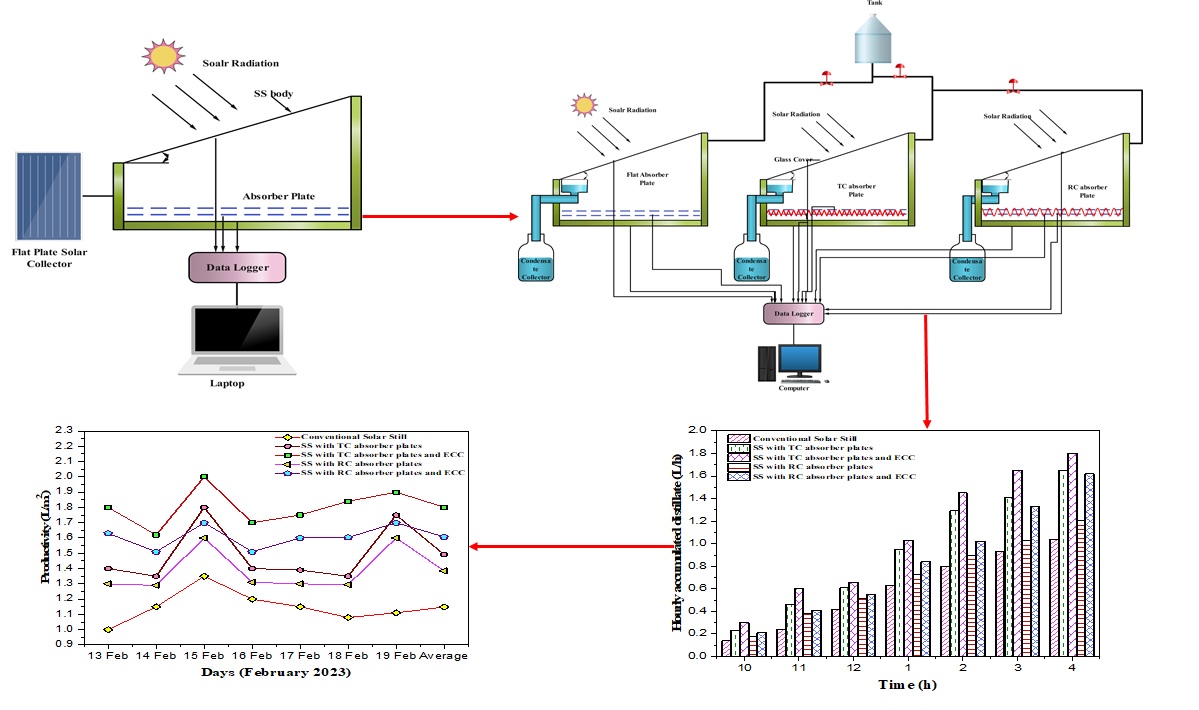
Solar distillation is a low-maintenance and energy-saving way to turn salt water into potable water. The main problem with the desalination process is that the slow evaporation and condensation rate of the system produces a low output rate of fresh water. An external copper condenser (ECC), two modified absorbing plates, and a single slope solar still (SS) are used to create a modified solar still (MSS) in this project. Evaporation rates may be increased by increasing the surface area of the absorber plates, which in turn enhances heat transfer to the basin water. The ECC is designed such that its cold surface area, in addition to the glass surface, is bigger, hence increasing the condensation rate. This study compares the performance of the conventional solar still (CSS), the solar still with triangular channeled (TC) and ECC (SSTCE), the solar still with triangular channeled (TC) with no ECC (SSTC), and the solar still with rectangular channeled (RC) and no ECC (SSRC) over the course of the month of February to determine the most effective and efficient. The ECC-equipped SS model achieved the greatest average productivity (1.8 ± 0.2 L/m2) in the experimentation. Highest mean instantaneous efficiency with SS, SSTC, and SSTCE is 19.3±2.4%, and maximum total efficiency is 18.41±0.7%. The inclusion of ECC increased average yield by 0.72 L/m2 and total efficiency by 8.14% as compared to normal SS. In addition, an economic study of the solar still is directed, with an result demonstrating that the MSS are, on average of 58.61% more efficient than the unmodified SSs.
Total file downloads: 22